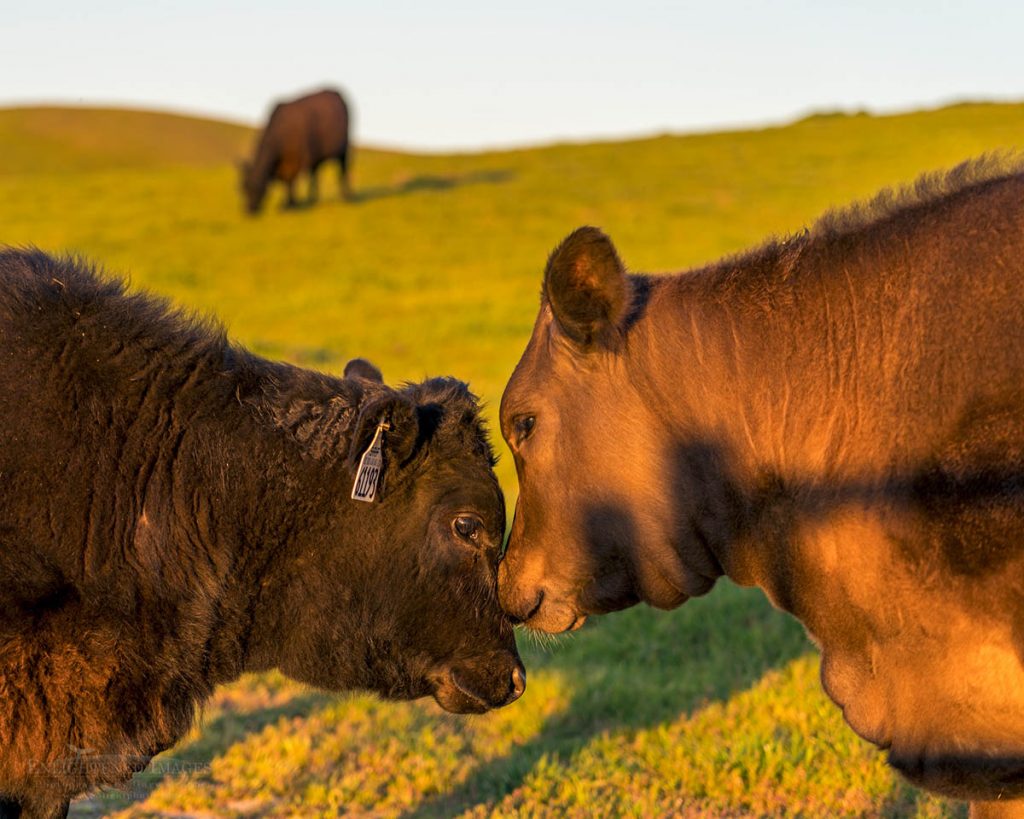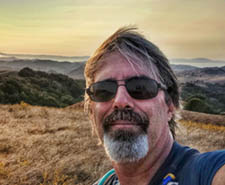
Sunset over rolling green hills and cattle in the Briones Valley, Briones Regional Park, Contra Costa County, California
Purchase Prints or License Usage: ID# 220117ra_BA3-0310h.
I Got a New Camera! Here are some of my First Snaps of Cows and Green East Bay Hills.
There seems to be a popular Social Media tradition that has emerged of late, namely letting people know you got a new camera or lens by posting a picture of the box(es) they came in, ideally stacked neatly on a coffee table in a living room. Well, I recently got a new camera and lens, but unfortunately won’t be sharing any photos of the boxes. To me, that’s like saying you bought a new car and post a photo of the receipt rather than of the car itself. Since cameras are meant for taking pictures, the only meaningful testimony should be the photos themselves.
After more than two decades as a dedicated Nikon shooter, it should come as (a/no) surprise that when it finally came time to retire my trusty Nikon D800 DSLR, I opted to switch to a fully mirrorless system. However, rather than go with Nikon’s new Z-cameras, I opted to upgrade to the 42Mp Sony A7Riii. Granted, this is not a new-new camera, although it’s new to me. Sony has had this gem on the market for a number of years and most recently released the next generation Sony A7Riv.
So why did I opt to get the older A7riii vs. the A7Riv? The simple fact was for all the similar bells and whistles, I just didn’t feel a need for every shot I took to be captured as a 60mp file. The processing, storage, and overall horsepower requirements where more simply didn’t mean better.
So why a Sony Mirrorless system instead of Nikon? First, I’ve been using the smaller 24mp Sony A6300 as a primary hiking and light travel camera for a number of years. That switch came after hauling a 40+ lb. pack of Nikon gear on a 10-mile day hike at altitude in Yosemite. Now, granted, my pack won’t weigh a lot less, especially as I get more new Sony lenses. However, using the A6300 was such a breeze to use and had great image quality to the point where I took that body and two lenses for nearly six weeks in China vs. hauling all of my Nikon gear. In that time, I became (at least) comfortable with Sony’s less-than-stellar menus. Secondly, after waiting for years for Nikon to catch up to Canon in the early days of digital, now Nikon was busy playing catch up to Sony. By the time Nikon released its Z-Camera line, it was just too late in the game to justify staying with Nikon. Furthermore, the fact that Nikon required a nearly $300 adapter just to mount any of my prime Nikon glass to their mirrorless body — not to mention increasing the length of the body/lens combo by several inches — it wasn’t an investment I was willing to make.
To pair with my new A7Riii, I opted to pick up the 24-105 f/4 G OSS lens that has gotten a lot of favorable reviews. I had previously purchased the APS-C 18-105 Sony PZ G OSS for the A6300 and just loved the versatility of the longer focal length. Rather than just tossing $10k in all prime Sony GM lenses, this would at least allow me a little time to play, learn the camera, and then decide which additional lenses to start building up this system. I’m happy to hear any recommendations. (I also own the 70-300 f/4 G OSS that I got for the A6300.)
So, enough about the camera. Please enjoy some of the first photos I’ve taken while out hiking with my new Sony A7Riii.
As always, thank you so much for looking, and I’d love to hear if you have a favorite image or two in the comments below.
Cheers,
~ Gary.
![]()
![]()

Picture #02: Green rolling hills at sunset looking toward Mount Tamalpais from the Briones Crest, Briones Regional Park, Contra Costa County, California
Purchase Prints or License Usage: ID# 220205rb_BA3-0089.
–

Picture #03: Young cow and green hills in spring, Briones Regional Park, Contra Costa County, California
Purchase Prints or License Usage: ID# 220313_BA3-0037.
–

Picture #04: Green hills, trail, and lagoon along the Briones Crest looking toward Mount Diablo, Briones Regional Park, Contra Costa County, California
Purchase Prints or License Usage: ID# 220121ra_BA3-0132.
–

Picture #05: Sunset behind a California Poppy bloom in spring, Briones Regional Park, California
Purchase Prints or License Usage: ID# 220313_BA3-0098.
–

Picture #06: Portrait of a young Bull calf atop the Briones Crest, Briones Regional Park, California
Purchase Prints or License Usage: ID# 220313_BA3-0048.
–

Picture #07: Person meditating outdoors at sunset and enjoying the bliss of the rolling green hills in spring, Briones Regional Park, Contra Costa County, California
Purchase Prints or License Usage: ID# 220117ra_BA3-0196.
–

Picture #08: Sunset light over the rolling green hills of the East Bay from the Briones Crest, Briones Regional Park, California
Purchase Prints or License Usage: ID# 220313_BA3-0435.
–

Picture #09: Female cow greets her young calf, Briones Regional Park, California
Purchase Prints or License Usage: ID# 220313_BA3-0258.
–

–
Picture #10: Sunset light on Mount Diablo seen over a lagoon and the green hills of Briones Crest, Briones Regional Park, Contra Costa County, California
Purchase Prints or License Usage: ID# 220313_BA3-0307.
–
![]()
 Gary Crabbe is an award-winning commercial and editorial outdoor travel photographer and author based out of the San Francisco Bay Area, California. He has seven published books on California to his credit, including “Photographing California; v1-North”, which won the prestigious 2013 IBPA Benjamin Franklin Gold Medal Award as Best Regional title. His client and publication credits include the National Geographic Society, the New York Times, Forbes Magazine, TIME, The North Face, Subaru, L.L. Bean, Victoria’s Secret, Sunset Magazine, The Nature Conservancy, and many more. In 2018, The USPS selected a nearly-unprecedented seven of Gary’s photographs to become U.S. Postage ‘Forever’ Stamps as part of the O Beautiful collection. Gary is also a photography instructor and consultant, offering both public and private photo workshops, as well as being a professional Photo Editor and Content Creator.
Gary Crabbe is an award-winning commercial and editorial outdoor travel photographer and author based out of the San Francisco Bay Area, California. He has seven published books on California to his credit, including “Photographing California; v1-North”, which won the prestigious 2013 IBPA Benjamin Franklin Gold Medal Award as Best Regional title. His client and publication credits include the National Geographic Society, the New York Times, Forbes Magazine, TIME, The North Face, Subaru, L.L. Bean, Victoria’s Secret, Sunset Magazine, The Nature Conservancy, and many more. In 2018, The USPS selected a nearly-unprecedented seven of Gary’s photographs to become U.S. Postage ‘Forever’ Stamps as part of the O Beautiful collection. Gary is also a photography instructor and consultant, offering both public and private photo workshops, as well as being a professional Photo Editor and Content Creator.
Follow me on FACEBOOK – INSTAGRAM – TWITTER
*** If you like this post, I would greatly appreciate it if you’d consider sharing this with your friends using one of the Social Media sharing buttons located at the top or bottom of this post. You can also sign up to receive free updates by email when future posts are made to this blog.
![]()
![]()


Gary: The photos from the old system looked good… and the photos from the new system look at least as good, too. 😉 Congratulation on the new setup.
There’s one thing about the world of gear right now that few are mentioning, but I think your story is an example of it. When the cameras mostly continued on a path of incremental improvement without design changes that required replacing (or adapting) existing lenses, it would have taken a perception that alternatives were a LOT better in order to convince us to look outside the brand we were using. It is one from Brand X users to upgrade to a newer Brand X body, but it an entirely different thing when that upgrade path also requires (or strongly encourages) the Brand X user to replace their entire stable of existing lenses that are no longer supported and which are no longer fully compatible with the new camera.
So, the manufacturers’ moves to mirrorless turn out to present us with some legitimate encouragement to consider a wholesale system switch. If we are going to end up potentially replacing, at least eventually, all of our lenses, why wouldn’t we take a serious look at alternative systems? If there was ever a time for a lot of people to reconsider their brand strategy it is now.
I find myself in this situation, too. I’ve used Canon for a couple of decades, and I have all of the lenses I need for that system. (Like you, I also use a smaller APS-C alternative system from another manufacturer for some of my photography.) Canon, like all brands, over time edges ahead and falls a little behind in various ways, but my EOS system with EF lenses is very good and works quite well. But new that is being discontinued and replaced by a new mirrorless “R” system with “RF” lenses. I’m sure they are good, and I would undoubtedly be happy with this gear. But if I’m going to replace _everything_, I’m going to do what I would not have done before — take a look at competing systems from companies like Sony and Nikon, and even at alternate formats such as the Fujifilm GFX system.
I’m very much not one of those “switcher” types… but who knows now? (In the meantime, I’m going slow. The gear I have still really works well, so I can afford to take my time.)
Dan
I’m equally miffed by the fact that Nikon wants their users to PAY for brand loyalty, with their ridiculously overpriced adapter. I’ve complained about that on Twitter (no reaction at all from Nikon, of course) — the thing that is supposed to keep users from switching systems, which is the adapter, should by all means be free, or cost as little as economically possible.
On a more positive note: I can’t see the slightest difference between these images and your older ones! Is it the photographer that matters in the end?!? 😀 I hope you will have lots of joy with the new camera system!
Stunning photographs Gary. I can definitely see the image quality improvement with your new camera. 💪💪
I would be interested in attending one of your “Bovine Photography Workshops” in the backcountry of Briones Regional Park. Please send me a schedule and price list.
FYI, I am a “Plant-Based Photographer”. So, I will need to say something nice to the cows before I photograph them. 🐄🐄🐮🐮🐮
Keep shooting.
Dream Chaser
OK, they are all seriouly beautiful! Great images, love #1 the most, but all wonderful. Thanks for sharing.
Lovely shots as always Gary, and your reasons for change make a lot of sense. Me, I’m being ultra slow, still using the original Sony A100 that replaced my old Minolta. Maybe it’s time I upgraded, but the photos it produces are still good. Cheers Margaret